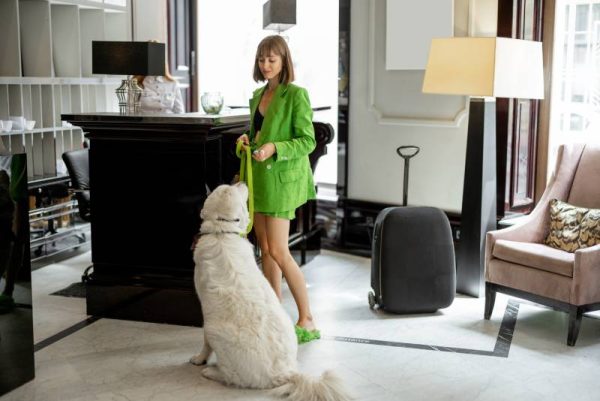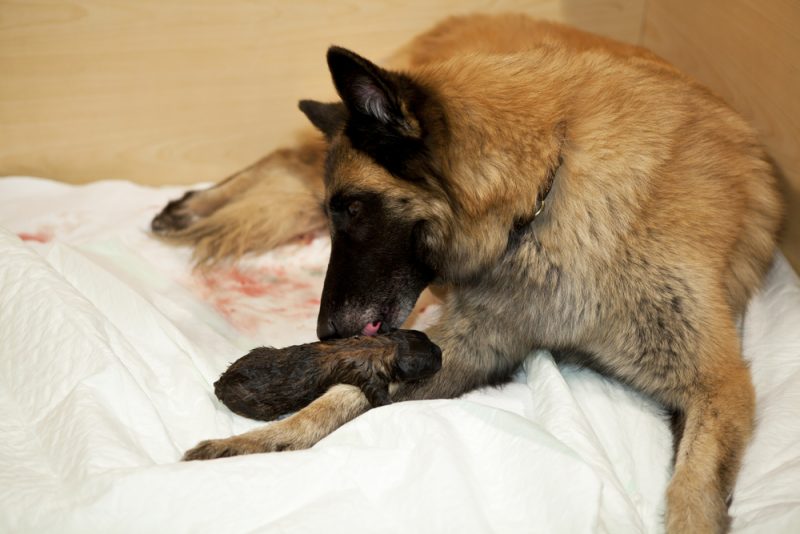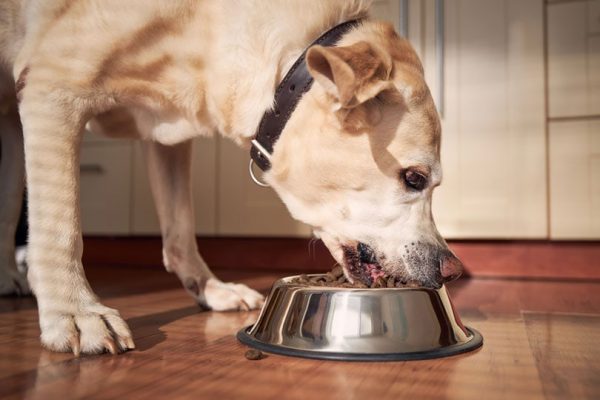Walking your best furry friend should be a joyous experience, but if your pup is pulling on the leash like a sled dog, it can quickly turn into a frustrating ordeal. However, with patience, consistency, and the right gear, you can teach your beloved dog to walk politely by your side, even on a loose leash.
Let’s take a closer look at loose-leash walking and what you can do to make your strolls more enjoyable for both you and your pup.

What Is Loose-Leash Walking?
Essentially, loose-leash walking entails teaching your dog to walk calmly beside you without pulling on the leash. Instead of tugging and straining, your pup learns to maintain a relaxed pace, matching yours stride for stride. Loose-leash walking also fosters better communication between you and your dog, strengthens your bond, and makes walks safer and more enjoyable for everyone involved.
The 12 Loose-Leash Walking Tips
1. Get the Proper Equipment
Invest in a well-fitting harness or collar and a sturdy leash suitable for your dog’s size and strength. Avoid retractable leashes, as these encourage pulling and lack the control needed for loose-leash walking.
- Harness: A well-fitting harness is crucial. Unlike collars, which can put pressure on your dog’s neck and exacerbate pulling behavior, harnesses distribute the force more evenly across your dog’s chest and shoulders, reducing the likelihood of injury.
- Front-Clip Harness: Consider using a front-clip harness, which has a leash attachment point on the front of the harness instead of the back. This design redirects your dog’s attention to you when they try to pull, making it easier to guide them back into proper walking position.
- Training Collar: If your dog responds better to collar-based training methods, opt for a training collar, such as a martingale or slip collar. These types provide gentle feedback when your dog pulls, encouraging them to walk more politely without causing discomfort or harm.
- Long Line: A long line is a valuable tool for practicing loose-leash walking in open spaces while still maintaining control over your dog. Choose a lightweight yet durable long line, so your pup can explore and roam while you work on reinforcing good leash manners.

2. Start Indoors
Begin your loose-leash walking training in a familiar, distraction-free environment like your living room or backyard. This controlled setting enables you to focus on teaching your dog the basics of walking politely without the added distractions of the outdoors.
3. Be Patient
Rome wasn’t built in a day, and neither is a well-behaved walking companion. Be patient with your dog as they learn new behaviors. Celebrate small victories, and remain calm and consistent, even in the face of setbacks.
4. Be Mindful of Your Body Language
Dogs are experts at reading body language, so be mindful of your posture and energy during walks. Stand tall, keep a relaxed grip on the leash, and avoid tensing up or leaning forward, as these cues can signal to your dog that i i’s time to pull.

5. Ensure Positive Reinforcement
Positive reinforcement, such as treats, praise, and toys, is essential to shaping your dog’s behavior. Reward your pup for walking politely beside you, and ignore or redirect any pulling. Positive reinforcement encourages your dog to repeat the desired behavior, making loose-leash walking a more enjoyable experience for both of you.
6. Keep It Short and Sweet
Training sessions should be short and sweet to keep your dog engaged and motivated. Aim for several brief walks throughout the day rather than one long excursion. Short, frequent sessions help prevent boredom and burnout, enabling your dog to stay focused and attentive during training.
7. Maintain a Consistent Pace
Instead of trying to assert dominance over your dog, focus on maintaining a consistent pace during walks. Dogs often naturally match the pace of their walking companions, so by keeping a steady rhythm, you can encourage your pup to stay calmly beside you. Avoid sudden changes in speed or direction, as these can confuse your dog and lead to pulling. By setting a consistent pace, you establish a predictable routine that helps your dog feel more secure and relaxed during walks.
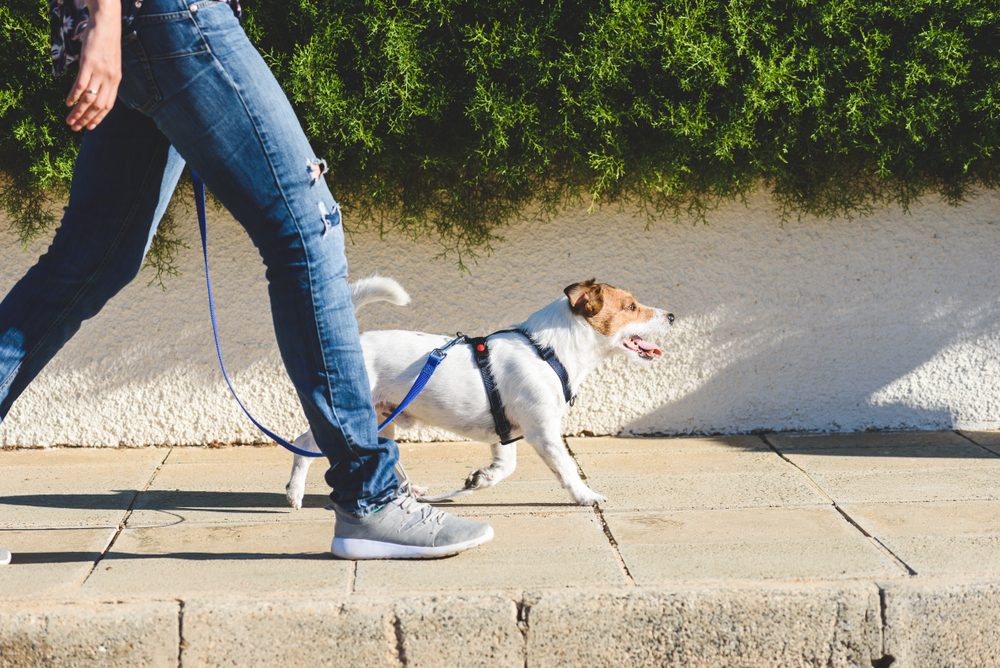
8. Use Verbal Cues
Teach your dog verbal cues like “heel” or “easy” to communicate your expectations during walks. Consistently using these will help reinforce the desired behavior and make loose-leash walking easier for your pup to understand. Verbal cues provide clear signals to your dog, so they know what you expect from them during walks, and facilitate better communication between you and your furry friend.
9. Practice in Various Environments
Once you and your dog can comfortably do loose-leash walking in a familiar environment, gradually introduce them to new surroundings with varying levels of distractions. Practice in different neighborhoods, parks, and even busy city streets to generalize the behavior. Exposing your dog to different environments helps them contextualize their training and learn to maintain good leash manners regardless of the surroundings.
10. Be Prepared for Distractions
Dogs are naturally curious creatures, so be prepared for distractions during walks. Carry high-value treats or toys to redirect your pup’s attention when they become fixated on something else. By providing positive distractions, you can help refocus your dog’s attention.

11. Stay Positive
Dogs are highly attuned to their owner’s emotions, so maintain a positive attitude during walks. Even if your pup has a moment of pulling or disobedience, avoid getting frustrated or angry. Stay calm, redirect their focus, and continue with the training. Positive reinforcement and a positive attitude create a supportive environment for learning, helping your dog feel more confident and motivated to succeed during walks.
12. Seek Professional Help If Needed
If you’re struggling to teach your dog loose-leash walking despite your best efforts, don’t hesitate to get professional help from a veterinarian or certified dog trainer. They can provide personalized guidance and support to address any specific challenges that you may be facing. This type of expert has the knowledge and experience to identify underlying issues and tailor a training plan to meet your dog’s individual needs, setting you both up for success in mastering loose-leash walking.
If you need to speak with a vet but can't get to one, head over to PangoVet. It's an online service where you can talk to a vet online and get the personalized advice you need for your pet — all at an affordable price!


How Long Does It Take to Train Loose-Leash Walking?
The time that it takes to train your dog to walk politely on a loose leash can vary depending on various factors, including your dog’s age, temperament, prior training, and consistency of practice. Some dogs may pick up the concept relatively quickly, while others may require more time and patience.
In general, you can expect to see progress within a few weeks of consistent training. However, mastering loose-leash walking is an ongoing process that requires continued practice and reinforcement. Even after your dog has learned the basics, you’ll need to continue reinforcing good leash manners through regular training sessions and consistent use of positive reinforcement.
That said, keep in mind that every dog is unique, and progress may not always be linear. Be patient, stay consistent, and celebrate the small victories along the way. With time and dedication, you and your pup can enjoy many happy, stress-free walks together.
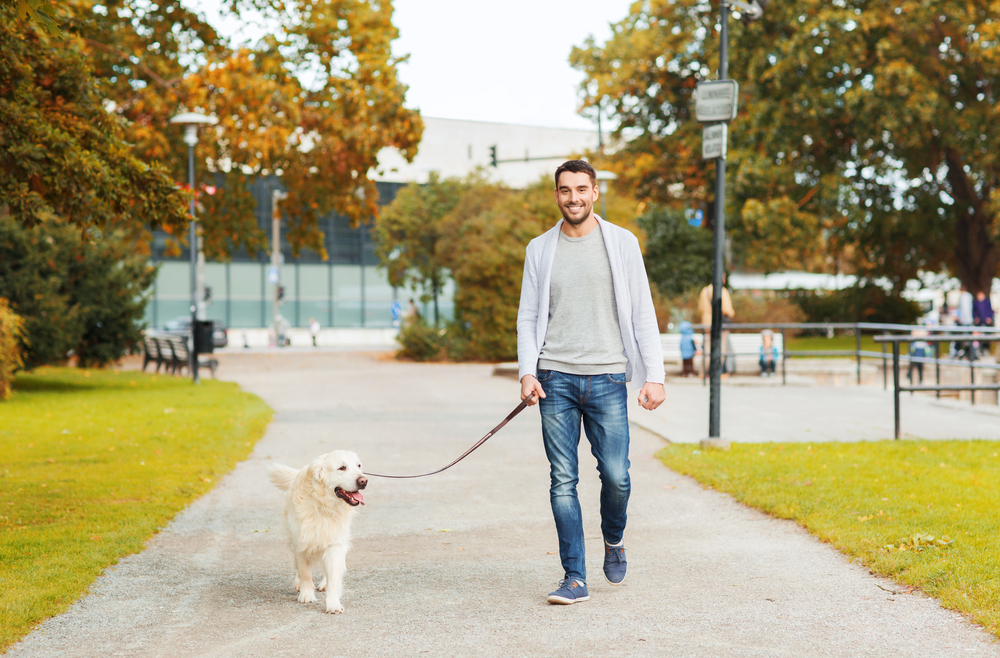

Conclusion
Mastering loose leash walking takes time, patience, and the right equipment, but the rewards are worth the effort. By following these tips and equipping yourself with the proper gear, you can transform your daily walks from a tug-of-war battle into a harmonious stroll with your beloved canine companion. So, grab the leash, lace up your walking shoes, and embark on a journey of discovery and adventure with your pup by your side. Happy walking!
Featured Image Credit: Jus_Ol, Shutterstock



